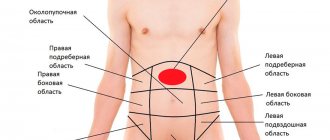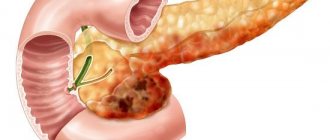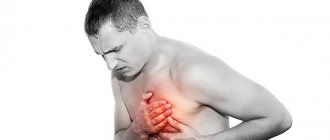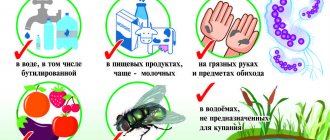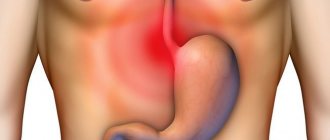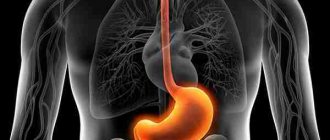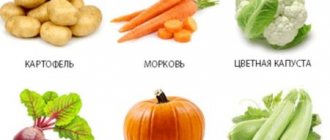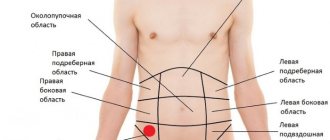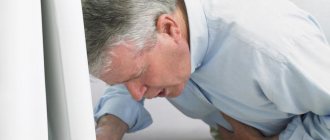Back pain with pancreatitis may indicate the development of an acute form of pancreatic disease or its chronic type in the pancreatic cavity. In general, when a pancreatic lesion forms in this organ, painful sensations are the first sign of a developing disease. The intensity and nature of the manifestation of this symptomatic sign completely depends on the form of the disease. In today's review, we will take a closer look at the causes and symptoms of pain in the acute course of pancreatic pathology, as well as in acute chronic disease.
Localization of pain during inflammation of the pancreas
Inflammatory processes in the pancreas are very painful, especially with acute pancreatitis. This pain is explained by the complex innervation of the organ, that is, the entire gland is literally entwined with nerve fibers.
Moreover, the innervation of exogenous cells (producing enzymes) occurs separately from the innervation of the islets of Langerhans ( responsible for the production of insulin) . Pain in the gland is explained by the sensitivity of the nerve endings.
The pancreas is not located in the same way in everyone, and this may explain the fact that:
- one patient feels pain in the left side,
- the other - in the peritoneum area,
- the third is under the diaphragm,
- in the fourth, pain from pancreatitis radiates to the back,
- the fifth patient experiences girdle pain.
Here we can talk about the wisdom of nature (or God). Imagine what would happen if the gland self-destructed, but the person did not feel anything. The flow of enzymes into the intestines would decrease, the islets of Langerans, which produce insulin, would be destroyed, and the person would not feel anything.
Important! Pain is a warning about problems in the body . In our case, a warning about a destructive process in the enzyme-forming gland. The pancreas is a vital organ. And its complete destruction can lead to the death of the patient.
Chronic form
In a chronic course, the symptoms of the disease rarely bother the patient. Discomfort in the abdomen and back occurs at the stage of exacerbation of the pathological process.
Unlike the initial stage of development of inflammation in the gland, with a chronic disease the intensity of pain in the abdomen and back gradually weakens.
The localization of the symptom depends on the area of organ damage:
- If the inflammatory process occurs in the head of the pancreas, then pain is observed in the right side of the body, pain in the lower back and chest is bothersome.
- If the focus of inflammation is located in the tail of the gland, then the syndrome affects only the left side, radiating to the same zones.
When the tail of the pancreas is affected, unpleasant sensations occur in the left side.
The symptom in question in the chronic course of the disease mainly occurs against the background of overeating and poor nutrition, which consists in the consumption of alcoholic beverages and fatty, spicy foods.
Pain in patients with damaged pancreas does not always occur due to the inflammatory process in the organ. The appearance of discomfort in the back is due to the presence of spinal diseases. Both pathologies can be differentiated by palpation of the back. If the intensity of the symptom does not increase when pressing on the lower back, this indicates damage to the pancreas.
Why does my back hurt with pancreatitis?
Depending on the area of localization of the inflammatory process, irradiation of pain occurs to other parts:
- In the lower back,
- To the right side,
- In the abdominal area.
The pain can be girdling, or local, that is, concentrated in one place.
Can my back hurt with pancreatitis? Yes, maybe, although it's a little hard to imagine. The pancreas has a shape that is rounded, thickened in front (head) and thinner towards the back (tail). A small glandular organ with its head stuck to the bend of the duodenum on the back of the stomach .
The tail is located closer to the spine, so the nerve fibers of the tail form low back pain with pancreatitis. When the head of the gland is affected by the inflammatory process, the pain is localized in the abdomen, on the left side.
Fighting methods
Discomfort in the lumbar and other parts of the spine with pancreatitis is a consequence of the development of pathology. To get rid of negative feelings, it is necessary to eliminate the cause of their occurrence. The further development of the inflammatory process in the pancreas must be stopped in a comprehensive manner.
The main method of combating pancreatitis is therapeutic fasting, which lasts 2-3 days until the attack subsides. Then the patient is gradually transferred to the Pevzner diet. At the same time, the doctor prescribes the necessary pharmaceutical medications.
Taking medications
During an exacerbation of pancreatitis, accompanied by severe pain in the abdomen and back, the patient should take a pain reliever. However, any medication must be approved by a doctor. Most often, compounds based on ibuprofen, diclofenac, papaverine, paracetomol and analgin are used as painkillers and anti-inflammatory drugs.
Diet
Dietary nutrition reduces the load on the affected organ. The patient is advised to eat more protein foods and less fat and carbohydrates. The diet should include baked vegetables and fruits, pureed soups, cereal side dishes and porridges. You should avoid fatty, fried, smoked, spicy and sweet foods. Carbonated and alcoholic drinks are also prohibited. Homemade compotes of berries and fruits, as well as rosehip decoction, are useful.
How to distinguish back pain with pancreatitis from other pathologies?
The patient cannot always assume that the digestive organs are capable of causing back pain. And therefore, when pain occurs in the back, the patient is ready to assume anything, but not inflammation of the organ of the digestive system. Instead of pancreatitis, a person is ready to assume:
- Renal colic,
- Radiculitis,
- Or that he strained his back, strained himself.
Meanwhile, pancreatitis is a dangerous disease , and incorrect self-diagnosis plus an error in treatment can cost him his life.
How to distinguish pancreatitis from other pathologies? When inflammation worsens, the following symptoms are observed:
- Cutting pain, often turning into girdling pain;
- The temperature rises;
- Loss of appetite;
- Nausea accompanied by vomiting may occur;
- Blood pressure drops to the point that the patient may lose consciousness;
- The face takes on a grayish color.
Radiculitis is characterized by back pain radiating to the legs , poor circulation in the legs, which can be identified by the appearance of “pins and needles”, tingling, or burning in one or both legs. Pain in the back muscles increases with movement. There may be thickening or redness of the skin in the area of sore muscles. With renal colic, temperature and blood pressure increase. The pain goes down to the bladder.
Important! An attack of pancreatitis usually occurs after a heavy feast with a lot of alcohol, fatty, spicy, salty foods (snacks) . Nutrition does not affect muscle pain and exacerbation of radiculitis. These types of pain occur after intense physical work, when lifting weights.
How to distinguish pancreatic and rheumatoid pain?
To determine the cause of the syndrome, it is necessary to identify the factor whose influence led to the appearance of pain in the back.
Pain caused by damage to the spine worries a person:
- after heavy physical exertion;
- due to spinal injuries;
- against the background of hypothermia;
- against the background of painful spasms localized in the area of the female appendages and ovaries.
Rheumatic pain often radiates to the upper or lower extremities.
With pancreatitis, the symptom occurs under the influence of overeating, as well as:
- overweight;
- diseases of the intestines and stomach.
Pancreatic pain is mainly of a cutting nature and often radiates to the hypochondrium and periumbilical area.
We recommend that you read:
- Blood biochemistry in pancreatitis;
- Creon for pancreatitis.
Girdle character
Shingles pancreatitis, when pain is felt in the abdominal cavity and in the back, and even the kidneys and genitourinary organs seem to hurt. Occurs when the gland is extensively affected by the inflammatory process. This is a dangerous condition. It often ends with surgery.
It is important to remember that when a large part of the organ is affected by the inflammatory process, the patient must be attentive to his body, to diet and restrictions on a number of foods.
If you have pancreatitis, you should give up alcohol forever. Doctors have noticed that most relapses and exacerbations of pancreatitis occur precisely after the holidays.
Important! The girdle pain during pancreatitis is unbearable, and at the first signs of exacerbation, you must consult a doctor to prescribe treatment. In case of acute pancreatitis, any food is excluded for the first 2 days. Although with such localization of pain, the patient himself will not want to eat.
Why does the disease affect the back?
Pain always accompanies inflammation in the tissues. The body signals the presence of a problem by sending impulses along the nerve endings to the brain.
The pancreas is located in the peritoneum next to the stomach. This part of the body contains a large number of nerve endings, which form a large bundle here. Any impact on the abdominal cavity (inflammation, shock, mechanical damage) causes pain that affects the abdomen and spine.
The localization of the pathology in question depends on the location of the pancreatic lesion and the severity of the disease. Often with pancreatitis, back pain occurs due to eating disorders (alcohol, fatty foods) or injury to the abdominal organs.
What to do?
First of all, it is necessary to confirm or exclude the presence of pancreatitis. If the symptoms described above occur with back pain (nausea, low blood pressure, etc. ), if back pain alternates with girdle pain, you should under no circumstances self-medicate. You need to see a doctor. Indeed, along with the digestion of pancreatic tissue, a tumor can form on the gland. Moreover, more often it is malignant.
Pain during exacerbation of pancreatitis does not go away. Pain pills may provide temporary relief. And it doesn’t matter where it is localized: in the peritoneum, or back, in the right or left side. If pain occurs, hospitalization will most likely be required.
Don’t try to replace going to the doctor with anesthetics, justifying yourself as being super busy. We often put off going to the doctor for fear of learning something terrible, and at the same time we miss an opportunity for treatment.
Important ! In especially severe cases of pancreatitis, when more than 2/3 of the gland is affected by necrosis, the doctor strongly recommends anectomy. This is a last resort.
If the pancreas is removed, other organs of the digestive system will experience constant stress, and the patient will have to receive enzymes while taking medications for life. Removal of the pancreas also entails hormone replacement and antidiabetic therapy.
The diagnosis of pancreatitis requires strict self-discipline from a person. And above all, discipline in nutrition. The principle “If you want, then you can” is a step towards the grave . Doctors have developed dietary nutrition for patients with pancreatitis. A strict diet is used during exacerbations, and a somewhat relaxed diet during remissions. Following a diet and giving up alcohol can slow down the destructive process and increase the life expectancy of a person suffering from pancreatitis.
Pain syndrome in chronic pancreatitis
Chronic pancreatitis can be characterized by systematic dull pain, or develop into attacks in which a burning and cutting pain syndrome is manifested.
The pancreas is conventionally divided into a head and a tail. When first struck, the pain may radiate to the lower back, chest, arm - on the right side. When the tail is affected, similar sensations are noted on the left.
The intensity is less than during an exacerbation, but also causes discomfort. The reasons may be overeating, eating foods prohibited by the diet, or drinking alcohol.
For initial diagnosis, the doctor may palpate the spine. If the spinal column does not respond with pain, then the cause is indeed inflammation of the gland. If palpation of the spinal column responds with pain over the entire area of the back, then you need to be examined for radiculitis, osteochondrosis and other diseases of the spine.
Symptoms
Signs of pancreatic pathology depend on the form of the disease and its nature (acute or chronic). Acute disease of the gland is characterized by the manifestation of clear symptomatic signs that require immediate medical attention. Signs of the acute form of pancreatic disease are expressed as follows:
- the appearance of acute pain in the hypochondrium on the right, involving the entire abdominal cavity;
- pain syndrome with girdling manifestations radiates with dagger-like cuts to the lumbar back and shoulder blade area, decreasing when taking a sitting position with a slight bend forward;
- intense level of nausea with characteristic vomiting;
- loss of appetite;
- bloating of the entire abdominal cavity;
- paleness or yellowness of the skin;
- increased heart rate with low blood pressure.
With the development of an acute form of pancreatic disease, the manifestation of pain in the back area becomes permanent. The same painful feelings also arise during exacerbation of the chronic form of this pathology, but they have a less pronounced nature of manifestation and can be mistaken for symptoms of a disease of the spinal column. The localization of back pain depends entirely on which part of the gland is affected by inflammation.
With the progression of inflammatory pathology in the area of the caudal part of the parenchymal organ, pain occurs on the left and can radiate to the lumbar region and chest. And if the head zone of the gland is affected, pain appears on the right side of the hypochondrium and can spread to the area of the right chest and to the lumbar region.
When the entire parenchymal organ is affected with the development of intense swelling, a girdle pain syndrome appears, affecting the entire cavity of the peritoneum and back.
In the event that the patient experiences, along with painful sensations in the area of the upper peritoneum, radiating to the back, a sharp weight loss. As well as a depressive state, vomiting with blood clots and yellowness of the skin and sclera of the eyes - this indicates that pancreatic pathology has entered a complicating stage, and perhaps endocrine pancreatic cancer has already formed. Treatment for this pathology is developed based on its stage of progression. Surgery is necessary for:
- resection of the head part of the gland;
- removal of certain areas of the small intestine;
- elimination of part of the bile duct, and maybe the bladder;
- to amputate the affected area of the stomach and reduce the growth of a tumor-like neoplasm.
After surgery, drug therapy is prescribed.
Prevention
Prevention of pancreatitis is carried out in compliance with the following recommendations:
- Avoid drinking alcohol, stop smoking;
- Follow the diet prescribed by your doctor;
- Maintain a healthy lifestyle and strengthen your immune system.
When pain in the pancreas radiates to the back, it is impossible to prevent it. But treating the condition, following the doctor’s recommendations, and following a special diet will significantly reduce the frequency and intensity of relapses.
